Mitch Miller lives and (mostly) works in Glasgow. He has been making dialectograms since 2009, at places such as the Red Road Flats and Glasgow’s east end. In 2010, he teamed up with his wife Emma Lennox, web artist Ewan Sinclair and Central Station to make the illustrated ‘web documentary’ Boswell in Space (www.boswellinspace.org). Current projects include PhD research at the Glasgow School of Art and two Commonwealth Games residencies. He shared the overall new talent prize with Chinese illustrator Jun Cen at the international AOI Illustration Awards 2013.
‘Dialectogram’ is a word I made up to win over a funding committee. It was a joke – a mash-up of ‘diagram’ and ‘dialect’ that seemed to describe the vernacular, idiosyncratic take on architects’ drawings, anthropological diagrams and other types of schematic I had been making. A corny joke, a catchy name – but in the four years since, ‘dialectogram’ has come to take on real meaning.
Dialectograms depict locations as the people who live or work there see them. They show the relationships and stories that turn a space into a place. Subjects I’ve drawn have mostly been in Glasgow, and include the tower-blocks at Red Road, Travelling Showmen’s yards in the east end, community centres, suburban high streets and just lately, a sports stadium. My latest dialectogram, pictured here, was of Piershill Community Flat, an amazing grassroots community resource in a working class district of Edinburgh (it’s nice when your work allows some foreign travel…)
There are two parts to my process that (because I really like making words up) we’ll call ‘dialectography’. The first is gathering. Once I’ve gained access to a place, I try to spend as much time there as I can. I want to get a feel for it, who the people are, how they use it, what they feel about it. And, I want the locals to get a feel for me too, get used to me, ask the questions they need to ask, decide if they want to be involved. By the end of my time at Piershill Community Flat people there said I was ‘in with the bricks’, and I considered that a compliment.
I work in a socially engaged fashion, so I’m generally asking my collaborators what the process can do for them. A lot of documentary work is fairly one-sided. It’s all about the artist’s vision, and how their ‘characters’ can best contribute to that. I try to avoid this.
When I go into a setting I am upfront about my goals – I want to create an interesting image in my ‘signature’ style. But I also try to use this process to initiate discussion over what the image could be, what other outputs we might make together and above all, to examine and think about the place together. A lot of my collaborators say they see themselves and their surroundings differently after the process, and I think that’s an outcome in itself.
At Piershill, we were all involved in researching and developing the dialectogram of the Flat. I was also pulled into its everyday activities. I did a ‘draw to order’ stall at the local fun-day, made comic strip diary entries that dramatized the process, got involved in the craft group, did self-portrait workshops and at their suggestion, created posters and useful materials for the community to use after I’ve gone (which will include a DIY dialectogram kit). And, now I’ve taken a scan of the original drawing, it will be gifted to the flat as a record of our time together, a representation of what the flat was during that period.
I understand that Beth, who runs the place, already has a wall picked out…
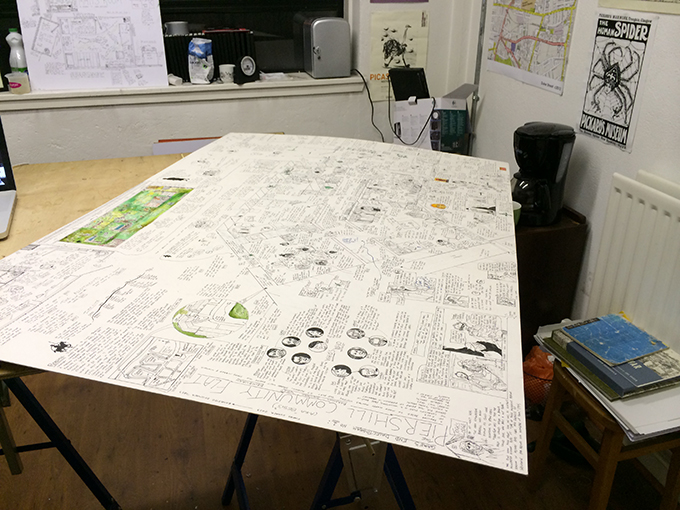
Piershill Dialectogram in the Studio
Speaking of the drawing… At some point during all this fun fieldwork, I have to get in my studio and start drawing. Now, even though I draw pretty much every day (usually on things I’m not meant to draw on…) I often get a sudden attack of laziness, or trepidation at this point. I get out a big, white bit of A0 board and just stare at it… and a few hours later, I’m going home for my tea, and the board is still alarmingly, accusingly, white.
But ultimately, the drawing does begin. I pencil out first, spending a lot of time getting the basic geography of the place right, establishing where everything is, working out where I want to put things (this process is nowhere near as straightforward or logical as I make that sound). The shape of the place usually sets the parameters for the stories and images I am going to present within the drawing. It is, literally, ‘the plot’.
Then as you can see from the in-process image here, I start to ink, putting more definition on the drawing. And I write. I try to ‘label’ the difference parts of the pace with stories, impressions and feelings I’ve gotten from my collaborators. I want to show what is significant for them. I check my notes, listen to any recordings and flick through the research photographs I take, to piece the place together.
At various stages I like to invite my collaborators to come in and take a look at what I’ve drawn. This is so they can check how accurate I’ve been, give my useful suggestions and directions and be confident that their material has been used appropriately and ethically. For Piershill, we were able to bring the group through to my studio to check on the drawing in its early stages. When it was 99% complete, we organised a Christmas event back at the flat, where everyone who was involved could take a look, make some final checks, then sign the drawing.
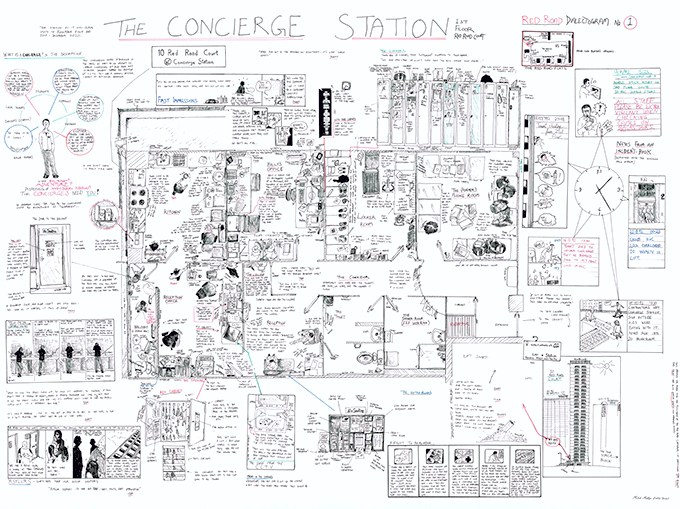
Concierge Station Dialectogram
People often ask how I know a drawing is ‘finished’. That’s a hard one to answer…many are never really finished to my satisfaction, I just run out of room on the sheet, or just as likely, out of time. People also ask how long they take, and again, that depends. When I drew Duke Street in the East End of Glasgow, I had 7 weeks to research and draw a 10 metre-long drawing (that definitely wasn’t finished to my satisfaction!). At 1/18th the size Piershill took 7 months of careful research and consultation.
But these are just different gradations of sloooow. And that’s kind of the point; a dialectogram is the result of a long, hard look at our surroundings. If it causes the audience to do the same, then it’s all been worthwhile.
//////
Want to read more blogs by artists? Look here.


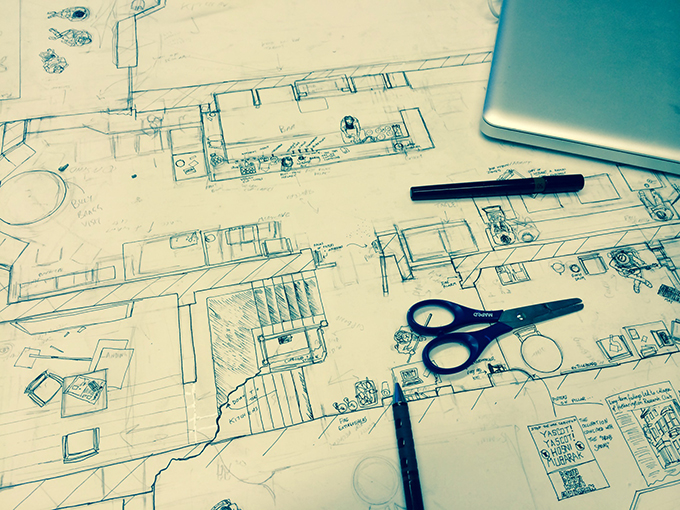
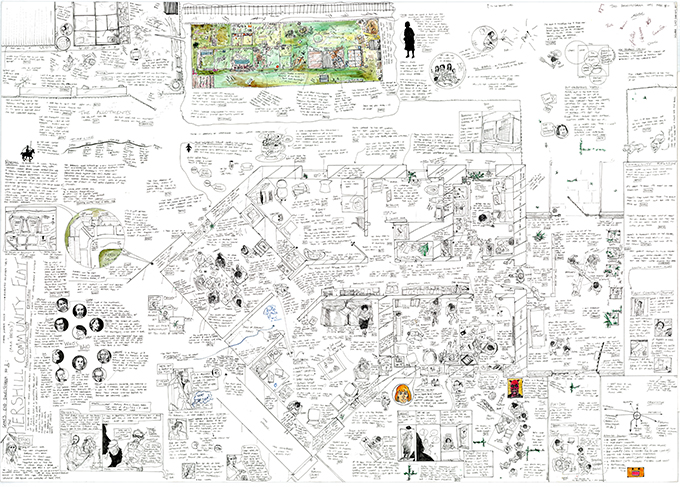

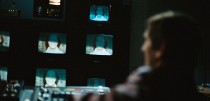











Comments